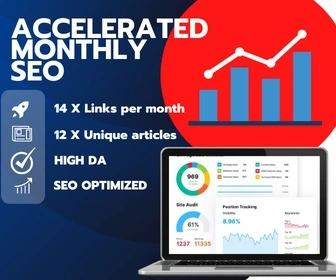If there’s one thing consistent about the digital space, it’s change. And one of the biggest drivers of that change, especially for businesses, is Google algorithm updates. For businesses aiming to make a mark online, understanding these updates is as critical as understanding your market.
But why all the fuss about these updates? Well, imagine putting in a lot of effort to rank your website on the first page of Google, only to wake up one morning and find it’s dropped several pages or disappeared entirely. That can spell disaster, especially for small businesses that rely heavily on online visibility. This scenario is exactly what happens when businesses aren’t in sync with Google’s algorithm shifts.
Remember, nobody knew about an update until it hits you. Don’t seek to blame others in your department to hold onto your job – and likewise if you are an agency, don’t blame other agencies and professionals, because we all live in glass houses and should not be throwing rocks. There is ONE key question everyone asks: How can we recover as quickly as possible from a Google Update. Unethical providers will have a ready solution for you – and 100 things they can blame if their solution fails, so let’s dig a little deeper to understand these updates better:
Breaking Down Google Algorithm Updates
What Exactly Are Algorithm Updates?
In the simplest terms, a Google algorithm is a set of rules that Google uses to determine the ranking of websites in search results. Think of it like the criteria a judge uses in a talent show. These criteria might change from season to season based on new trends, values, or the need to offer something fresh to the audience. In a similar way, Google modifies its ranking criteria to give users the best search experience possible. These modifications or refinements to the rules are what we refer to as “algorithm updates.”

The Rhythm of Google’s Updates
Google is always striving to provide its users with the best, most relevant, and highest-quality results. To achieve this, they’re continuously refining and tweaking their algorithms. Sometimes, these are minor daily updates that go unnoticed. At other times, they are major shifts that can significantly affect search rankings.
Why does Google update so frequently? It’s primarily to stay ahead of misleading tactics or strategies that websites might use to rank higher, even if they don’t provide valuable content. By staying ahead of these tactics, Google ensures that the user always finds what they’re genuinely looking for.

Why Every Business Should Be In The Know
Now, you might wonder, “Why should I, as a business owner, be concerned about these updates?” Here’s the deal: Google is, by a wide margin, the most popular search engine out there. If your website doesn’t align with Google’s current criteria, your online visibility can take a hit. And less visibility means fewer customers discovering your services or products.
So, every time there’s an update, websites need to evaluate and, if necessary, adjust their strategies. It’s like a race where the track’s conditions change frequently. Racers (websites) need to adapt their techniques to those changing conditions to stay ahead or even just remain in the competition.
Major Algorithm Updates and Their Echoes
The beauty of Google lies in its constant quest to better itself, often reshaping the online stage for businesses and users alike. By releasing periodic algorithm updates, Google ensures its search results remain top-notch and relevant. As we dig deeper, let’s take a tour of some significant updates that have shaped the online search experience.
Panda: The Quality Content Advocate
Date Introduced: February 2011
The Panda update was a game-changer, shifting the focus towards quality content. Prior to this update, many sites would pack their pages with keywords, hoping to game the system and achieve high rankings. Panda put a stop to that, penalizing sites with low-quality, thin, or duplicated content.
For businesses, this meant a renewed emphasis on generating authentic, valuable content. No longer could you simply stuff keywords into a page and hope for the best. This was a wake-up call for many to up their content game, making sure what they put out there genuinely benefited the reader.
Penguin: The Link Quality Enforcer
Date Introduced: April 2012
Links have always been a core part of SEO strategies. Pre-Penguin, there was a surge in the number of sites building unnatural backlinks to boost their rankings. Penguin was Google’s response to this trend, aimed at identifying and downgrading sites employing manipulative link schemes.
After Penguin, the link-building strategy landscape saw a paradigm shift. Businesses had to ensure that their backlinks were coming from reputable sources. The age-old tactic of buying links or getting them from low-quality directories took a backseat. In essence, it encouraged businesses to earn their links through genuine, high-quality content and collaborations.
Mobilegeddon: Embracing the Mobile Age
Date Introduced: April 2015
With the world swiftly moving towards mobile browsing, Google recognized the need to prioritize mobile-friendly websites. Enter Mobilegeddon. This update ensured that sites optimized for mobile devices ranked higher in search results when the query came from a mobile device.
This shift was a clear message to businesses: adapt to the mobile era or risk being left behind. It led to an increased focus on responsive design, ensuring a seamless browsing experience across all devices. As more and more people began using phones and tablets for searches, this update proved essential in keeping businesses relevant in the modern age.
BERT: Making Sense of Search Context
Date Introduced: October 2019
BERT, which stands for Bidirectional Encoder Representations from Transformers (I know, it’s a mouthful!), was all about understanding the context of search queries better. Unlike previous algorithms, BERT analyzes words in relation to all the other words in a sentence rather than one by one in order.
With BERT, Google could grasp the full context of words in search queries. This meant even more accurate and relevant search results. For businesses, it emphasized the importance of creating content that answers real user questions in a natural, conversational tone.
Broad Core Update: Adjusting the Search Focus
Date Introduced: March 2019
Broad Core Updates are not about introducing new features or targeting specific issues. Instead, they fine-tune Google’s overall algorithm to ensure it’s providing the most relevant results. Unlike other updates, where Google gives specific guidance on what has changed, Broad Core Updates are more general in nature.
These types of updates can cause significant fluctuations in search rankings. But it doesn’t mean a site that experiences a drop in rank is “penalized.” It’s more about other sites being rewarded for their relevance. The mantra after a Broad Core Update? Continue focusing on producing high-quality, relevant content.
Diversity Update: Ensuring Varied Search Results
Date Introduced: June 2019
Have you ever done a Google search and found that most of the top results come from the same domain? The Diversity Update aimed to tackle this. Its goal was to provide more diverse results by limiting the number of times a single domain appears in the top results for a particular query.
While this update didn’t dramatically shift the SEO world, it did make businesses realize the importance of diversifying their online presence. Having a variety of content types—like blogs, videos, and podcasts—became more crucial. This way, if one of your pages didn’t rank for a keyword, another one might.
Site Diversity Update: Offering a Wider Perspective
Date Introduced: June 2019
Not to be confused with the Diversity Update, the Site Diversity Update was Google’s way of ensuring that users got results from a wider array of sources. This update made sure that no more than two pages from the same domain would typically appear for a single query.
Businesses quickly recognized that while their main website might rank well, they could also get traction from other platforms or affiliated sites. The takeaway? Diversifying your online presence across multiple platforms could maximize your visibility in search results.
Core Update: Refining the Search Metrics
Date Introduced: September 2019
Similar in nature to the Broad Core Update from March, this September update was another one of Google’s general tweaks to improve search result relevance. Such updates don’t target specific types of sites or topics but rather refine the overall search metrics.
When Google rolls out such updates, websites may see drops or gains in search rankings. The key for businesses? Stay the course. Keep an eye on performance metrics, ensure content stays fresh and relevant, and maintain a pulse on user engagement.
Featured Snippet Deduplication: Streamlining Search Results
Date Introduced: January 2020
Google’s Featured Snippets offer users quick answers to their questions directly on the search results page. With this update, if a site’s content appears as a Featured Snippet, it won’t be repeated as a regular search result on the first page. In essence, this was Google’s way of decluttering and improving the user experience.
For businesses, this was a double-edged sword. While having a Featured Snippet can drive substantial traffic, not having that additional regular search result could be seen as a lost opportunity. The key became optimizing content specifically for Featured Snippets to capture that coveted spot.
May Core Update: Refining the Search Process
Date Introduced: May 2020
Just like its predecessors in 2019, this core update focused on enhancing the overall search algorithm. It didn’t pinpoint specific issues but aimed at refining the search process to provide users with even more relevant results.
Given the broad nature of core updates, businesses needed to maintain a holistic approach to SEO. Ensuring high-quality, user-focused content remained the cornerstone strategy in the face of such updates.
Passage Ranking: Pinpointing Information
Date Introduced: December 2020
Instead of just looking at the overall page content, Google started considering individual passages when determining relevance to a query. This allowed Google to rank specific sections of a page that are highly relevant to a search, even if the overall page is on a broader topic.
This update reinforced the importance of structured content. It’s not just about the overall topic; every section matters. Businesses learned to ensure each passage of their content was clear, informative, and could stand on its own in terms of relevance.
Mobile-First Indexing for the Entire Web
Date Introduced: March 2021
Google officially started using mobile-first indexing for the entire web in March 2021. This means that the mobile version of a website is what Google primarily uses for indexing and ranking.
If businesses hadn’t already prioritized their mobile website experience, this update made it clear that it’s no longer optional. Mobile optimization, ensuring content is the same on desktop and mobile, and fast load times on mobile became crucial.
Core Web Vitals Update
Date Introduced: May 2021 (integrated with the Page Experience Update)
Core Web Vitals are a set of metrics related to speed, responsiveness, and visual stability. They became an essential part of Google’s Page Experience signals. These vitals include Largest Contentful Paint (LCP), First Input Delay (FID), and Cumulative Layout Shift (CLS).
With this update, businesses needed to focus not just on the content but also on how users experienced the content. Websites that offered smooth interactions, loaded quickly, and provided visually stable experiences were in a better position to rank well.
MUM: A New Way to Understand Complex Queries
Date Introduced: Announced in 2021, but broader implementation expected in subsequent years.
MUM stands for Multitask Unified Model. It’s designed to understand complex search queries by analyzing them across 75 different languages without the need to switch between them. It can understand and generate language, making it a powerful tool for comprehensive search analysis.
While MUM’s full implementation is still unfolding, its capabilities hint at a future where businesses must be even more thorough and comprehensive in their content strategies. Addressing user queries in depth and breadth, and considering global audiences, will be key.
Page Experience Update: Prioritizing User Experience
Date Introduced: June 2021
This update was all about user experience. Google began factoring in metrics like loading performance, interactivity, and visual stability of page content. Simply put, how users experience interaction with a web page became a ranking criterion.
The onus was now on businesses to ensure their websites were not just informative but also user-friendly. Fast loading times, mobile optimization, and smooth interactivity became even more essential.
Link Spam Update: Furthering the Fight Against Spam
Date Introduced: July 2021
With this update, Google ramped up its efforts to identify and nullify link spam. The aim? Ensuring users get the most trustworthy and relevant results.
Businesses were once again reminded of the importance of ethical SEO practices. Building genuine, high-quality backlinks became paramount. No shortcuts, just authentic link-building strategies.
Product Review Update: Elevating In-depth Analysis
Date Introduced: April 2022
This update was specifically for product review content. Google started prioritizing in-depth, expertly written reviews over thin, summarised content. The goal was to provide users with more insightful purchasing information.
For businesses, this meant re-evaluating their review content. Surface-level reviews weren’t going to cut it anymore. Detailed analysis, expert opinions, and firsthand user experiences became the gold standard.
Google Helpful Content Update
Date Introduced: August 2022
You’d have to read our extensive guide on the Google Helpful Content Update here to appreciate some of the latest thinking on the issue. It has now been confirmed that this is a sitewide update.
Google March 2024 Spam Update
Date Introduced: Early March 2024
Any lessons to learn?
Stay Flexible and Proactive
The Essence of Adaptability in SEO
Flexibility isn’t just a virtue; it’s a necessity. As search engines evolve, so too must our strategies. Being adaptable means acknowledging that what worked yesterday might not be as effective tomorrow. It’s about viewing change not as a hurdle but as an opportunity for growth and refinement.
By keeping oneself updated on the latest updates and shifts in the algorithm, one isn’t just reacting to the changes but preparing for them. A proactive approach to SEO, fueled by up-to-date information, not only ensures relevance but fosters resilience against potential challenges.
In the end, SEO is less about chasing algorithms and more about understanding and meeting the needs of our audiences. As we stay committed to this principle and embrace adaptability and foresight, success is not just a possibility—it’s a promise.







